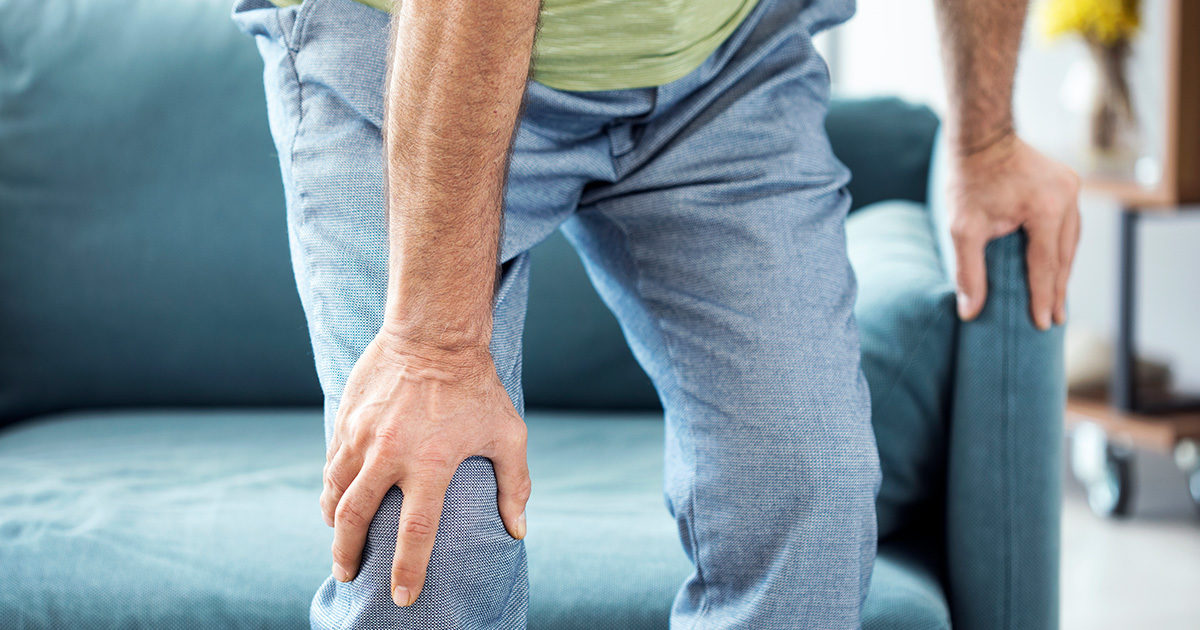No, Your Knee Pain Is Not in Your Head
Yes, cold damp weather can aggravate joint pain, though probably not for the reason you think
Reviewed by: Karl Koenig, MD, FAOA, FAAOS, FAAHKS
Written by: Gene Lazuta

Many clinicians consider hip and knee replacement surgery one of the most successful medical procedures ever created to decrease the discomfort experienced by patients with joint pain. But Karl Koenig, MD, an orthopedic surgeon who specializes in hip and knee replacement surgery (including the complex surgical procedures required to correct a misaligned or infected existing artificial joint) and serves as the Executive Director of UT Health Austin’s Musculoskeletal Institute, disagrees. For Dr. Koenig, joint replacement is not “one of” medicine’s most successful procedures; it is the most successful.
“To me,” says Dr. Koenig, “there’s just no question. When it is the right patient in the right situation at the right time, joint replacement surgery is the best thing you can do to improve someone’s quality of life. And for me, as a surgeon, nothing feels better than watching a patient comfortably walk away after their last visit. I get a lot of hugs.”
“But before I came to UT Health Austin,” continues Dr. Koenig, “I also struggled with that larger population of patients who can spend years suffering, waiting for their condition to advance to the point that joint replacement becomes the right option. That’s why we made our Musculoskeletal Institute’s care team multidisciplinary. We brought all the right people with the right skills, together, in one place specifically so we could take care of each patient as a whole person. Using that approach, we now offer services that range from exercises that strengthen muscles to better support weakened joints, all the way up to and including surgery when it’s appropriate.”
The most common causes of joint pain not associated with a physical injury, particularly in the hip or knee, is one of two types of arthritis: inflammatory or osteoarthritis. Inflammatory arthritis, such as rheumatoid or psoriatic arthritis, involves some process in which a person’s own immune system attacks the joint, causing inflammation and ultimately destroying the cartilage that cushions moving bones. Osteoarthritis results from wear and tear over time and is often exacerbated by increased body weight, which from a biomechanical perspective, exerts four times the pressure on a joint for each pound carried above the waist. So for every 20 pounds of excess weight, a knee or hip supports the equivalent of 80 pounds during each step a person takes.
Because cartilage does not have pain receptors, the mechanism that wears it out is often painless until the late stages. Pain is felt in the tissues and bones that surround a joint. A person may not even be aware that their cartilage is wearing out until it wears through and bone begins pressing against pain receptor-rich bone. When the pain fibers inside bone and soft tissue fire, they start a reaction that releases inflammatory cytokines into the joint fluid, which signal other cells to release more inflammatory cells, setting up a vicious cycle.
As Dr. Koenig explains, “It is this involvement of soft tissue and nerves that can make a change of seasons from warm and dry to cool and damp aggravate joint pain.” Though clinicians do not fully understand why, there are indications that changes in barometric pressure leads to swelling in muscles, tendons, and ligaments. And, apparently confirming what might have once sounded like an old superstition, in 2014 a large survey study asked over 700 patients if they could feel weather-related changes in their joints. Over two-thirds of them reported that they could, and, more to the point, they said that their pain got worse as fall and winter approached.
“So even if we don’t understand exactly why, there seems to be a relationship between damp cold and joint pain,” concludes Dr. Koenig. “But there’s also a relationship we do understand, and it’s one we can all do something about. Cooler weather, more rain, overcast skies, less sunshine to brighten your mood, and even snow when it occurs—all these seasonal changes can make getting up and getting outside less attractive. Maybe you skip your morning walk or instead of walking up to the coffee shop, you drive. You just feel less motivated to get moving when it’s cold and that means you don’t move your joints, which can aggravate your pain since gentle, regular exercise is the best way to keep a joint loose and smooth. It’s similar to visiting a classic car show. Classic car owners will tell you that the worst thing in the world for the life of a car is to let it sit in the garage. To keep a car in top shape, you have to drive it. To keep your joints strong, you have to move—even if, actually, especially when, it gets cold.”
To learn more about UT Health Austin’s Musculoskeletal Institute or to make an appointment, call 1-833-UT-CARES (1-833-882-2737) or visit here.